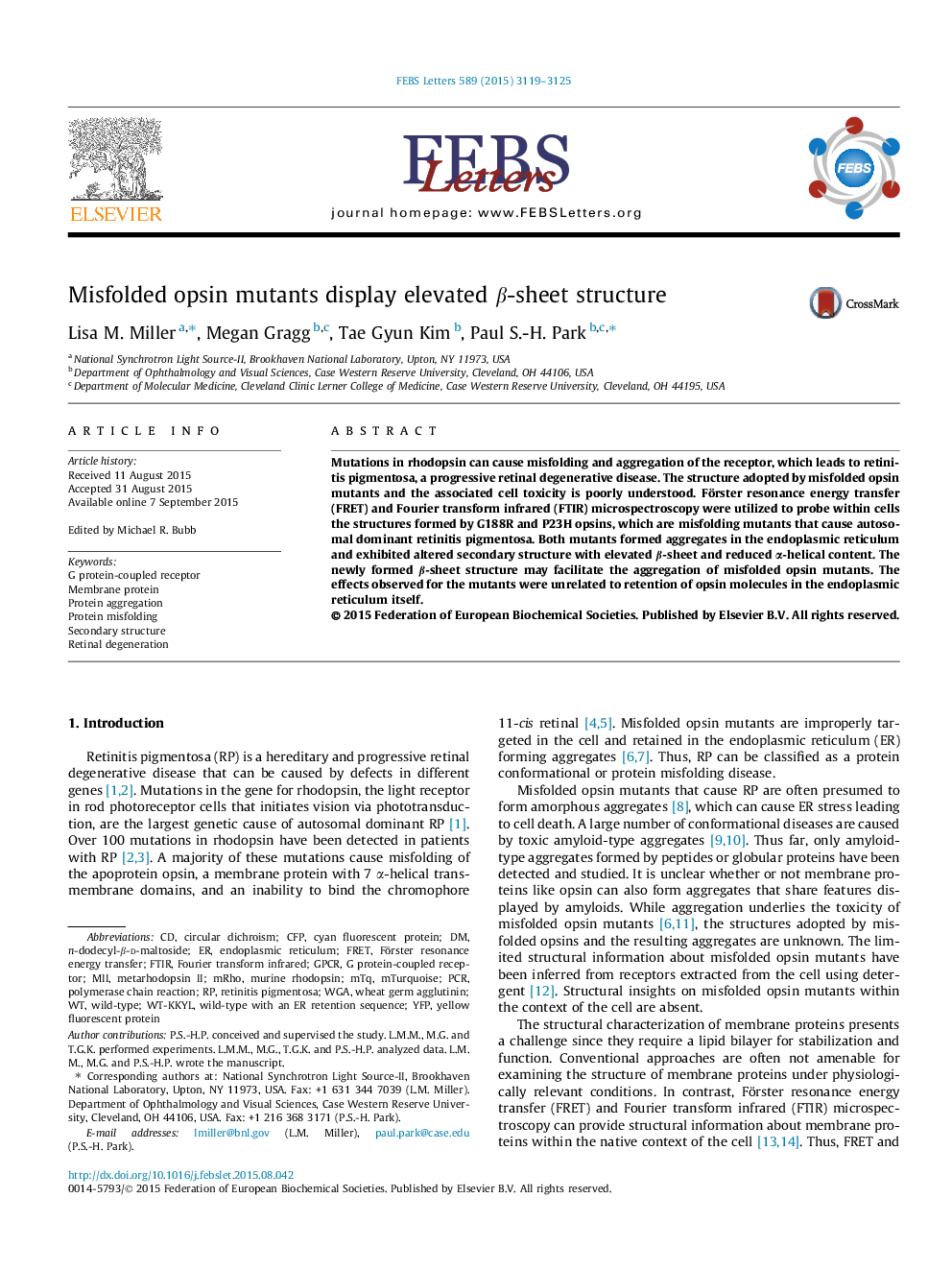| Article ID | Journal | Published Year | Pages | File Type |
|---|---|---|---|---|
| 10869875 | FEBS Letters | 2015 | 7 Pages |
Abstract
Mutations in rhodopsin can cause misfolding and aggregation of the receptor, which leads to retinitis pigmentosa, a progressive retinal degenerative disease. The structure adopted by misfolded opsin mutants and the associated cell toxicity is poorly understood. Förster resonance energy transfer (FRET) and Fourier transform infrared (FTIR) microspectroscopy were utilized to probe within cells the structures formed by G188R and P23H opsins, which are misfolding mutants that cause autosomal dominant retinitis pigmentosa. Both mutants formed aggregates in the endoplasmic reticulum and exhibited altered secondary structure with elevated β-sheet and reduced α-helical content. The newly formed β-sheet structure may facilitate the aggregation of misfolded opsin mutants. The effects observed for the mutants were unrelated to retention of opsin molecules in the endoplasmic reticulum itself.
Keywords
GPCRMetarhodopsin IIWGARetinitis pigmentosaYFPCFPn-Dodecyl-β-D-maltosideFörster resonance energy transferFRETFourier transform infraredprotein aggregationMTQretinal degenerationcircular dichroismendoplasmic reticulumFTIRProtein misfoldingSecondary structurewild-typeMIIpolymerase chain reactionPCRMembrane proteinyellow fluorescent proteincyan fluorescent proteinWheat germ agglutininG protein-coupled receptor
Related Topics
Life Sciences
Agricultural and Biological Sciences
Plant Science
Authors
Lisa M. Miller, Megan Gragg, Tae Gyun Kim, Paul S.-H. Park,
